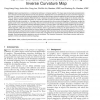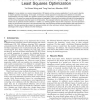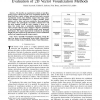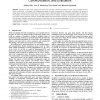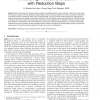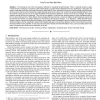131
click to vote
TVCG
2008
14 years 11 months ago
2008
Mesh parameterization is a fundamental technique in computer graphics. The major goals during mesh parameterization are to minimize both the angle distortion and the area distortio...
96
Voted
TVCG
2008
15 years 6 days ago
2008
We present a novel postprocessing utility called adaptive geometry image (AGIM) for global parameterization techniques that can embed a 3D surface onto a rectangular1 domain. This ...
159
click to vote
TVCG
2008
15 years 6 days ago
2008
A curve skeleton is a compact representation of 3D objects and has numerous applications. It can be used to describe an object's geometry and topology. In this paper, we intro...
123
Voted
TVCG
2008
15 years 6 days ago
2008
Abstract-- We describe an experiment in which art and illustration experts evaluated six 2D vector visualization methods. We found that these expert critiques mirrored previously r...
101
Voted
TVCG
2008
15 years 6 days ago
2008
101
Voted
TVCG
2008
15 years 6 days ago
2008
We introduce a novel technique to generate painterly art maps (PAMs) for 3D nonphotorealistic rendering. Our technique can automatically transfer brushstroke textures and color cha...
TVCG
2008
15 years 20 days ago
2008
A solid-state dynamic parallax barrier autostereoscopic display mitigates some of the restrictions present in static barrier systems such as fixed view-distance range, slow respons...
98
Voted
TVCG
2008
15 years 20 days ago
2008
Interactive history tools, ranging from basic undo and redo to branching timelines of user actions, facilitate iterative forms of interaction. In this paper, we investigate the des...
112
click to vote
TVCG
2008
15 years 20 days ago
2008
Both texture maps and procedural shaders suffer from rendering artifacts during minification. Unlike texture maps, there exist no good automatic method to antialias procedural shad...
105
Voted
TVCG
2008
15 years 20 days ago
2008
The treemap is one of the most popular methods for visualizing hierarchical data. When a treemap contains a large number of items, inspecting or comparing a few selected items in a...
